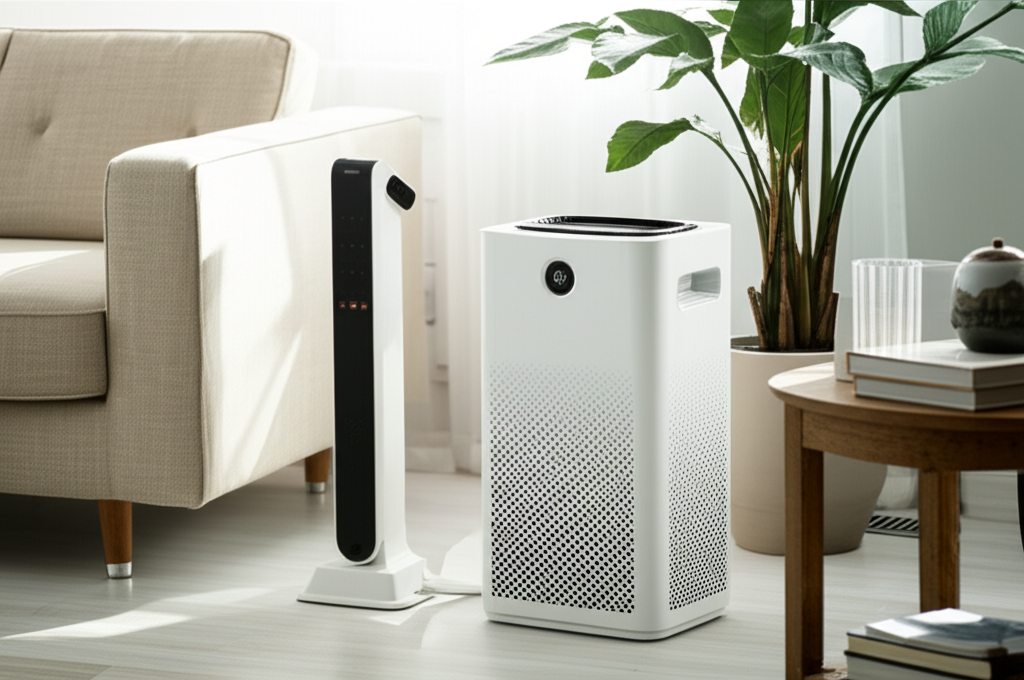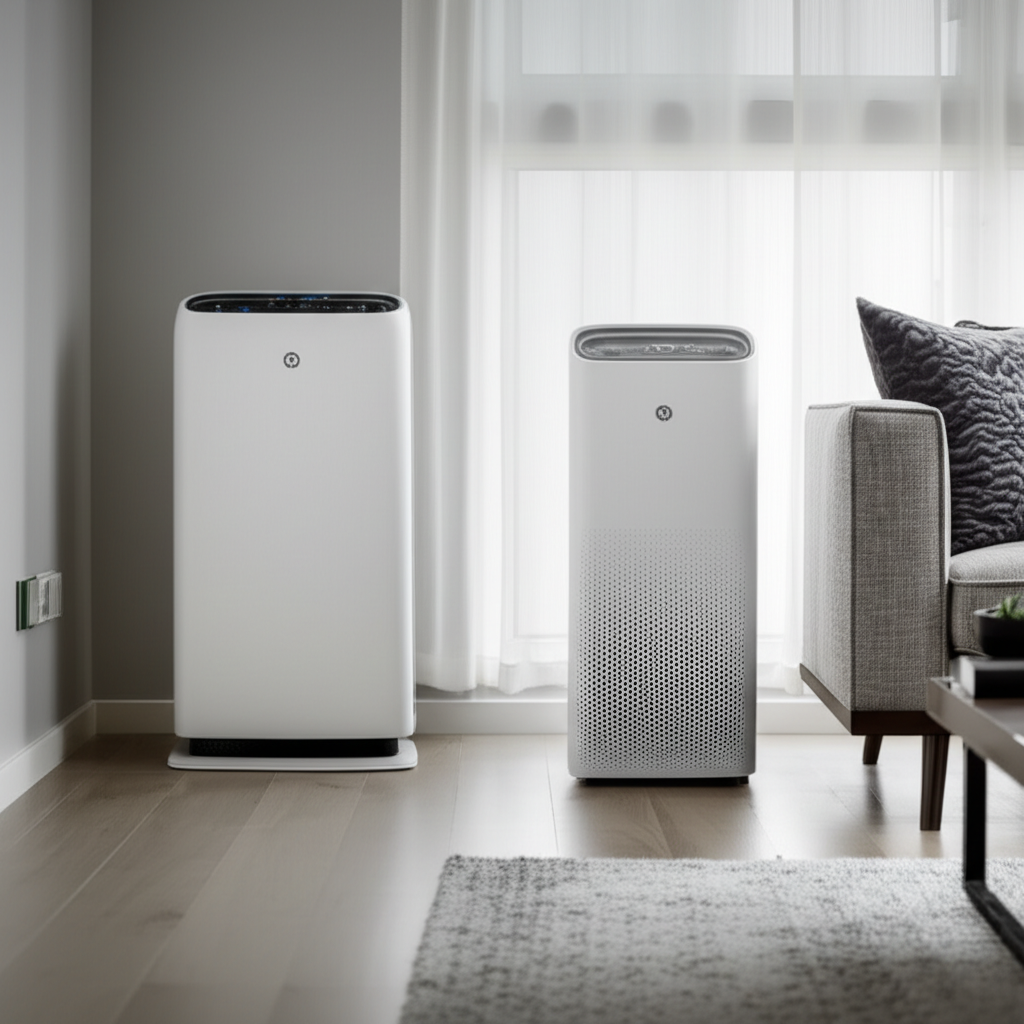Yes, you can use an air purifier and a dehumidifier at the same time, and doing so can significantly improve your indoor air quality and comfort by tackling both airborne pollutants and excess moisture. This guide will explore the benefits, potential drawbacks, and best practices for running these two appliances concurrently to create a healthier living environment.
Can I Use Air Purifier and Dehumidifier at the Same Time? Essential Guide
Many homeowners wonder if combining an air purifier and a dehumidifier is a good idea for their indoor environment. The answer is a resounding yes, as these devices work synergistically to enhance air quality and comfort. Understanding how they function together and the optimal way to use them can help you achieve the best results for your home.
Understanding the Roles of Air Purifiers and Dehumidifiers
An air purifier is designed to remove airborne contaminants like dust, pollen, pet dander, mold spores, and volatile organic compounds (VOCs) from the air. It typically uses a fan to draw air through a series of filters, trapping these particles. A dehumidifier, on the other hand, is specifically built to extract excess moisture from the air, reducing humidity levels. This is crucial for preventing mold growth, dust mites, and that uncomfortable sticky feeling in humid climates.
The Synergy: How They Complement Each Other
When used together, an air purifier and a dehumidifier create a powerful duo for a healthier home. While the air purifier tackles airborne pollutants, the dehumidifier addresses the moisture that can exacerbate problems like mold and dust mites, which are often allergens. This combined approach leads to cleaner, fresher, and more comfortable air, particularly beneficial for individuals with allergies or respiratory issues.
Benefits of Using Both Appliances Simultaneously
Running both an air purifier and a dehumidifier at the same time offers several significant benefits. You’ll experience a reduction in allergens and irritants thanks to the purifier, while the dehumidifier combats the dampness that encourages mold and mildew growth. This dual action contributes to a more comfortable living space, reduces the musty odors often associated with high humidity, and can even help protect your home’s structure from moisture damage.
Potential Drawbacks and Considerations
While generally beneficial, there are a few things to consider when running both appliances. Firstly, they both consume electricity, so be mindful of your energy bill. Secondly, in very dry environments, running a dehumidifier might make the air too dry if the air purifier is also running constantly. It’s also important to ensure proper placement so they don’t obstruct each other’s airflow.
Optimal Placement for Both Devices
Proper placement is key to maximizing the effectiveness of both your air purifier and dehumidifier. Ideally, place them in the room where you spend the most time, such as the living room or bedroom. Ensure there’s adequate space around each unit for optimal airflow; avoid placing them directly against walls or furniture. If you have a specific area with high humidity, like a bathroom or basement, consider placing the dehumidifier there.
Best Practices for Simultaneous Operation
To get the most out of using your air purifier and dehumidifier together, follow these best practices. Monitor your home’s humidity levels using a hygrometer and adjust the dehumidifier’s settings accordingly. Clean or replace your air purifier’s filters regularly as per the manufacturer’s instructions. Consider running them during peak humidity hours or when air quality is a concern, rather than 24/7, to manage energy consumption.
Choosing the Right Combination of Devices
When selecting devices, consider the size of your space and your specific needs. Look for air purifiers with HEPA filters for efficient particle removal and dehumidifiers with adjustable humidistats. Some modern appliances are even combo units, offering both purification and dehumidification in a single device, which can be a space-saving and energy-efficient solution.
Energy Consumption and Cost-Effectiveness
Running two appliances will naturally increase your electricity usage. However, the benefits to your health and home comfort can outweigh the added cost. To optimize energy efficiency, use timers, smart plugs, or energy-saving modes if your devices have them. Regularly maintaining your units, such as cleaning filters, also ensures they run more efficiently.
When to Use Them Separately
There might be instances where using the devices separately is more beneficial. If your primary concern is extremely dry air, you might only need your air purifier. Conversely, if the air is already sufficiently dry but polluted, the dehumidifier might not be necessary. Always assess your immediate environmental needs to determine the best course of action.
Maintaining Your Appliances for Peak Performance
Regular maintenance is crucial for both your air purifier and dehumidifier. For air purifiers, this means cleaning or replacing filters according to the manufacturer’s recommendations – typically every 6-12 months for HEPA filters and more frequently for pre-filters. Dehumidifiers require emptying the water tank (unless you have a continuous drain setup) and cleaning the coils and air filter to prevent mold and ensure efficient operation.
Frequently Asked Questions
Can running an air purifier and dehumidifier together damage my appliances?

No, running them together will not damage your appliances as long as they are functioning correctly and placed with adequate airflow. They are designed to operate independently and complement each other’s functions.
Will using both increase my electricity bill significantly?
Yes, using two appliances will increase your electricity bill. However, the increase depends on the energy efficiency of your specific models and how long you run them. Using them strategically and opting for energy-efficient models can help mitigate costs.
What is the ideal humidity level for my home?
The ideal indoor humidity level is generally between 30% and 50%. Levels above 60% can promote mold and dust mite growth, while levels below 30% can lead to dry skin, irritated sinuses, and static electricity.
Do I need a separate dehumidifier for each room?
It depends on the size of your home and the humidity levels in different areas. For larger homes or significant humidity issues in specific rooms (like bathrooms or basements), multiple units or a whole-house dehumidifier might be necessary. A single unit can often manage the humidity in a medium-sized room effectively.
Can I use an air purifier and a dehumidifier in a small bedroom?
Yes, you can use both in a small bedroom. However, be mindful of air circulation and potential noise levels. Ensure both units are appropriately sized for the room and consider using them during specific times, like overnight, to maintain optimal air quality and comfort without over-drying the air.
Are there any health risks associated with running both at the same time?
There are no inherent health risks associated with running both simultaneously. In fact, the combined effect can be beneficial for people with allergies or respiratory conditions by reducing pollutants and controlling moisture that encourages mold growth.
Conclusion: A Healthier Home Environment Awaits
In conclusion, the question of can I use air purifier and dehumidifier at the same time has a clear and positive answer. By understanding their individual roles and how they work together, you can effectively manage both airborne pollutants and excess moisture in your home. This dual approach creates a healthier, more comfortable living space, reducing allergens, preventing mold, and improving overall air quality. Remember to place them strategically, maintain them regularly, and monitor your home’s environment to enjoy the full benefits of this powerful combination.
